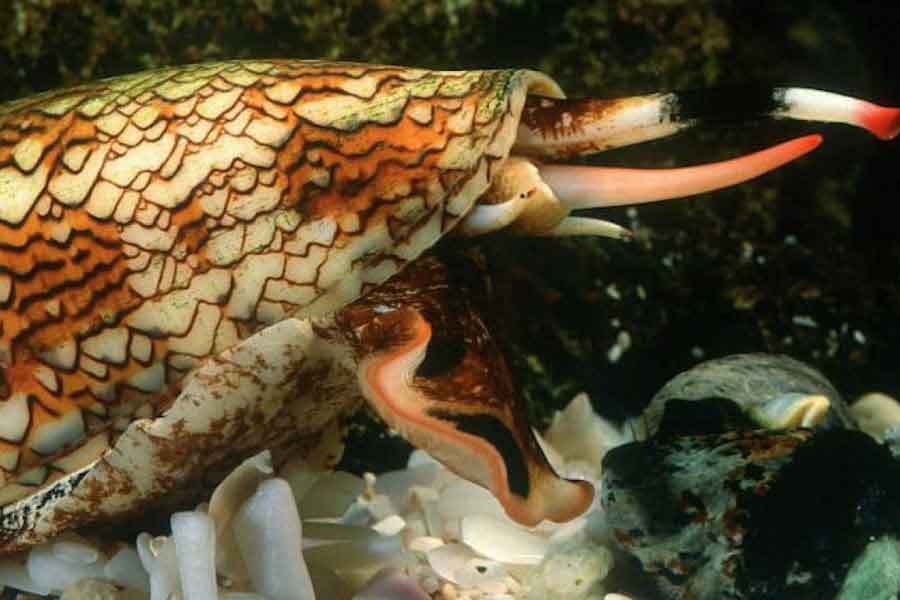
No animal appears as innocent in the marine depths as a snail. Its slow movements and sluggish behavior give it an unassuming appearance. However, one of the existing species, the Cone Snail, is actually a cruel predator with a surprisingly effective hunting system.
These animals have a venomous gland inside them that is connected to a siphon resembling a cannon. When a potential prey enters the cone’s range, it shoots out a dart, much like a bow launches an arrow, and stabs it into the flesh of its victim. It could be said that this mollusk «bites» its prey from a distance, as the dart is actually a highly evolved and modified radula tooth. Once it bites, the tooth secretes a toxin that is a powerful muscle relaxant. The affected animals become so «relaxed» that they stop breathing and die. When this happens, the snail approaches the victim and engulfs it with its distensible stomach.
Among the cone’s favorite victims are small reef fish, although they can also attack other cone snails. Their natural habitat is the Indian Ocean, and they are quite common in Australia’s Great Barrier Reef. Of the four hundred existing species, only about ten can be dangerous to humans, especially to divers who capture them to sell their colorful shells to collectors. In some cases, such as the shell of the Glory Marus, one of the most dangerous cone snails, collectors have valued it at over a thousand dollars. The price of a risky endeavor.
«One cannot defend what one does not love, and one cannot love what one does not know.»

